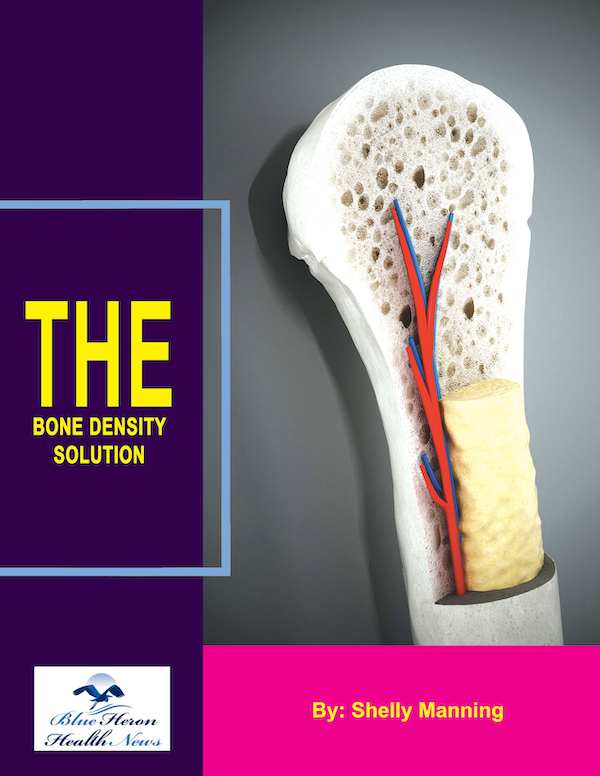
The Bone Density Solution By Shelly Manning The Bone Density Solution is worth considering for all those who are looking for an effective and lasting solution for the pain and inflammation caused by osteoporosis. The solutions are natural and can contribute to the overall well being. You just need to develop some healthy habits and add the right food to your diet to get the desired benefit.
What role does weight-bearing exercise play in treating low bone density?
Weight-bearing exercise is the most important factor in overcoming low bone density because it encourages the body to build and maintain denser bones. When bones are subjected to mechanical stress—especially when performing activities that challenge one against the force of gravity—the body responds by increasing bone formation and suppressing bone loss.
???? How It Helps Bone Density:
Stimulates Bone Remodeling
Weight-bearing stress activates bone-building cells (osteoblasts), which promotes the formation of new bone and increases bone mineral density (BMD).
Increases Muscle Strength
More forceful muscles pull on bones during movement, putting extra stress that stimulates bone strength.
Improves Balance and Coordination
Reduces risk of falls, a major cause of fractures in people with low BMD.
????️♀️ Best Types of Weight-Bearing Exercise:
High-impact (most effective, if safe for the individual):
Walking briskly, jogging, jumping rope, stair climbing, dancing, hiking.
These are ideal for those without a high fracture risk.
Low-impact (safer for people with osteoporosis or frailty):
Walking, low-impact aerobics, elliptical training, tai chi.
Resistance training (complementary and highly beneficial):
Lifting weights, bodyweight exercises (e.g., squats, lunges), resistance bands.
Builds both muscle and bone strength, especially in the hips and spine.
✅ Tips for Safe and Effective Exercise:
Start gradually, especially if you’ve been inactive.
Focus on form and posture to avoid injury.
Combine weight-bearing with balance and flexibility training.
Avoid risky activities (e.g., twisting, high-impact jumping) if you have osteoporosis unless a physician approves.
Summary
Weight-bearing exercise is one of the best non-drug methods for building or maintaining bone density. If done on a regular basis, it can increase BMD, reduce fracture risk, and improve general physical health.
Would you like a weekly exercise routine for bone health that is easy for beginners?
Yes, bone density can be increased after menopause, but the extent is different with each intervention. Following menopause, estrogen levels go down, and bone loss accelerates. Nevertheless, with the right interventions, bone loss can be slowed down, halted, or even reversed to some degree.
The following is how bone density can be enhanced or maintained after menopause:
✅ 1. Medications That Increase Bone Density
These are the most potent way to replenish bone:
Bisphosphonates (alendronate, risedronate, etc.): These drugs decrease bone breakdown and modestly increase bone density.
Denosumab: A monoclonal antibody that suppresses bone resorption and can significantly increase spine and hip bone density.
Teriparatide / Abaloparatide: Analogs of parathyroid hormone that increase the creation of new bone.
Romosozumab: Both bone formation is increased and resorption is decreased. It’s one of the most effective for increasing bone mass.
Hormone Replacement Therapy (HRT): Estrogen therapy can preserve bone density, especially when started early after menopause.
???? 2. Nutritional Support
Calcium: 1,200 mg/day from diet and supplements if needed.
Vitamin D: Essential for calcium absorption—most adults need 800–2,000 IU/day.
Protein: Helps muscle mass and bone strength.
Magnesium and Vitamin K2: Potential supportive roles in bone metabolism.
????️ 3. Lifestyle Changes
Weight-Bearing Exercise: Walking, strength training, and resistance exercises help stimulate bone growth.
Avoid Smoking and Excess Alcohol: Both accelerate bone loss.
Fall Prevention: Adds safety, especially if bones are already weakened.
???? How Much Improvement Is Possible?
Medications like teriparatide and romosozumab can increase bone density by 8–15% in the spine and a bit less in the hip over 1–2 years.
Nutrition and exercise are long-term maintenance necessities but by themselves typically produce only modest benefit.
Conclusion: Yes, bone density can be increased after menopause—especially with prescription medication combined with specific lifestyle changes. Early detection and comprehensive treatment program provide the best outcomes.
Would you like help comparing medications or planning a bone-strengthening approach?
The Bone Density Solution By Shelly Manning The Bone Density Solution is worth considering for all those who are looking for an effective and lasting solution for the pain and inflammation caused by osteoporosis. The solutions are natural and can contribute to the overall well being. You just need to develop some healthy habits and add the right food to your diet to get the desired benefit